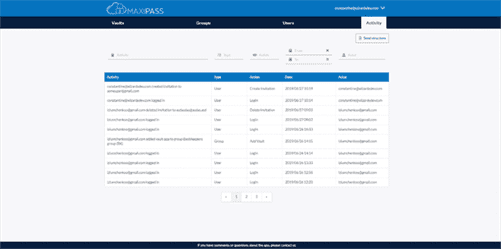That means predicting new threats, perceiving changes in existing threats, and developing comprehensive response plans. But in situations of threat, sometimes only a robust risk-management https://www.globalcloudteam.com/ plan can protect an organization from interruptions to critical business processes. For more on how to assess and prepare for the inevitability of risk, read on.
The risk-return tradeoff only indicates that higher risk investments have the possibility of higher returns—but there are no guarantees. On the lower-risk side of the spectrum is the risk-free rate risk level definition of return—the theoretical rate of return of an investment with zero risk. It represents the interest you would expect from an absolutely risk-free investment over a specific period of time.
Why is it important to review and monitor the assessments?
With safety software, there’s also less chance that your risk assessments will grow old and out of date. When assessing a new risk, you can determine the period in which the hazard will need to be re-evaluated and ensure that this is completed in a timely fashion. Risk management software also allows you to get a clear picture of risks throughout your organization. You can roll-up the data to get a global perspective or zero in on a single facility or department, examining each and every significant hazard along with identified controls.

Should an entire company employ a single common risk assessment matrix or should each department have its own specific one? Ultimately, it’s best for an organization to be able to adjust the size and design of its risk matrix as needed. As a refresher, a risk matrix is a tool that safety professionals use to assess the various risks of workplace hazards. EHS workers assess risks by evaluating the severity of a potential hazard, as well as the probability that it will occur.
Phrases Containing risk
In the past, some organizations have viewed risk management as a dull, dreary topic, uninteresting for the executive looking to create competitive advantage. But when the risk is particularly severe or sudden, a good risk strategy is about more than competitiveness—it can mean survival. Here are five actions leaders can take to establish risk management capabilities. A static approach to risk is not an option, since an organization can be caught unprepared when an unlikely event, like a pandemic, strikes.

Each MRL is subject to change as new information becomes available concomitant with updating the toxicological profile of the substance. MRLs in the most recent toxicological profiles supersede previously published levels. Managers and supervisors have front-line responsibility to protect workers and keep the workplace safe. Learn how to recognize hazards and take effective preventive actions to prevent injuries and foster a safety culture at your workplace. The workplace decides to implement risk control measures, including the use of a stool with a large top that will allow the individual to maintain stability when standing on the stool. They also determined that while the floor surface is flat, they provided training to the individual on the importance of making sure the stool’s legs always rest on the flat surface.
System Risk Analysis
When investing in foreign countries, it’s important to consider the fact that currency exchange rates can change the price of the asset as well. Foreign exchange risk (or exchange rate risk) applies to all financial instruments that are in a currency other than your domestic currency. Risk is defined in financial terms as the chance that an outcome or investment’s actual gains will differ from an expected outcome or return. Risk includes the possibility of losing some or all of an original investment. Avoidance is a method for mitigating risk by not participating in activities that may negatively affect the organization. Not making an investment or starting a product line are examples of such activities as they avoid the risk of loss.
Choosing the appropriate template for a project occasionally results in heated debates between risk management professionals. A general definition of adverse health effect is “any change in body function or the structures of cells that can lead to disease or health problems”. Get guidance on how to implement and maintain an effective occupational health and safety program. It is good practice to review your assessment on a regular basis to make sure your control methods are effective. For simple or less complex situations, an assessment can literally be a discussion or brainstorming session based on knowledge and experience.
You are here: Hazard and Risk – General
Business risk refers to the basic viability of a business—the question of whether a company will be able to make sufficient sales and generate sufficient revenues to cover its operational expenses and turn a profit. While financial risk is concerned with the costs of financing, business risk is concerned with all the other expenses a business must cover to remain operational and functioning. These expenses include salaries, production costs, facility rent, office, and administrative expenses. The level of a company’s business risk is influenced by factors such as the cost of goods, profit margins, competition, and the overall level of demand for the products or services that it sells.
On the other hand, because the 3×3 matrix has a basic design it’s open to errors. For that reason, it might become difficult to truly determine where the boundary between acceptable and unacceptable lies. In addition, with a 3×3 matrix, there are only three categories of risks — low, medium and high. For complex hazards or projects, a 4×4 or 5×5 matrix may be more appropriate, as they allow for more nuanced risk assessments. By multiplying a hazard’s probability and severity values, you can calculate the acceptability level of its risk. For more information on how to perform a risk assessment, see our more detailed guide.
analysis
Examples of riskless investments and securities include certificates of deposits (CDs), government money market accounts, and U.S. Treasury bill is generally viewed as the baseline, risk-free security for financial modeling. It is backed by the full faith and credit of the U.S. government, and, given its relatively short maturity date, has minimal interest rate exposure.
- MRLs are intended to serve as a screening tool to help public health professionals decide where to look more closely.
- Assessing the health risk of your patients can yield improvements in efficiency and use of resources.
- Manage risk from changing market conditions, evolving regulations or encumbered operations while increasing effectiveness and efficiency.
- When compared to the risk matrix chart (Table 1), these values correspond to a low risk.
- It may take some extra time, but it is important to incorporate the care team’s perception of risk.
- Financial investment products such as stocks, options, bonds, and derivatives carry counterparty risk.
- It is also essential to be sure that any changes in the workplace have not introduced new hazards or changed hazards that were once ranked as lower priority to a higher priority.
The risk impact of cyberthreats includes loss of confidentiality, integrity, and availability of digital assets, as well as fraud, financial crime, data loss, or loss of system availability. The modern era is rife with increasingly frequent sociopolitical, economic, and climate-related shocks. In 2019 alone, for example, 40 weather disasters caused damages exceeding $1 billion each. To stay competitive, organizations should develop dynamic approaches to risk and resilience.
Risk and Diversification
For more complex situations, a team of knowledgeable personnel who are familiar with the work is usually necessary. Risk evaluation – the process of comparing an estimated risk against given risk criteria to determine the significance of the risk. Hazard identification – the process of finding, listing, and characterizing hazards. Finally, organizations should decide how they will respond when a new risk is identified. This decision-making process should be flexible and fast, actively engaging leaders from across the organization and honestly assessing what has and hasn’t worked in past scenarios.
